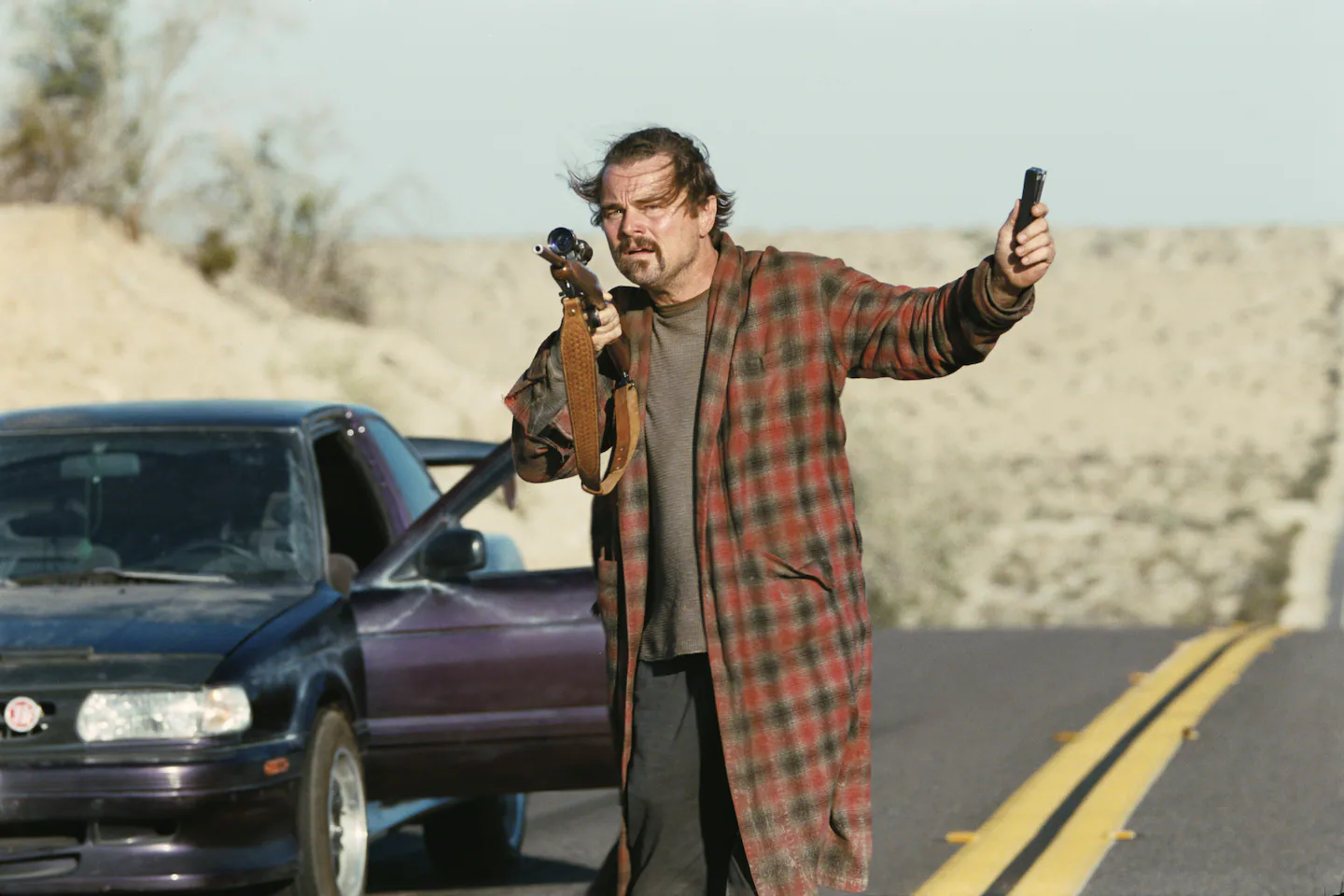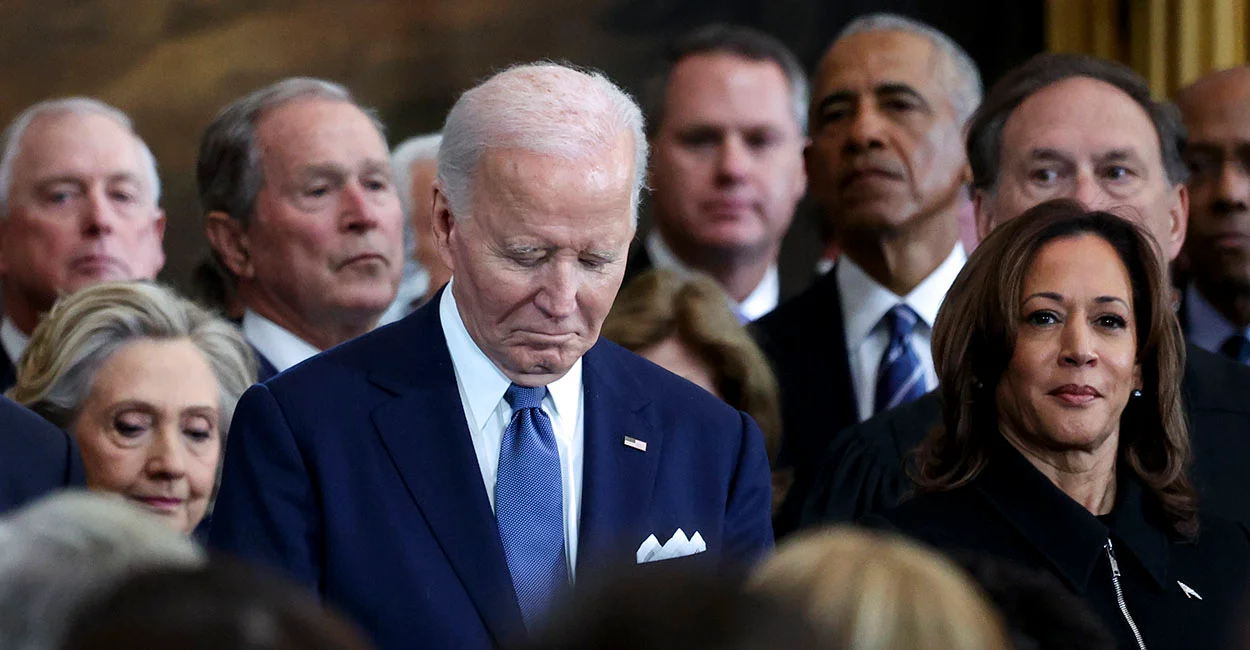Copyright The Boston Globe

Even bigger, so far as the rest of the culture is concerned, is “One Battle After Another,” which was released in late September. Hearing the title, most moviegoers likely think, “Right, that’s the one starring Leonardo DiCaprio in a bathrobe.” Others might think of Paul Thomas Anderson, who wrote and directed it. Pynchon fans have a different association. Anderson adapted it from Pynchon’s novel “Vineland” (1990). It’s the second movie adaptation of one of his novels. Anderson, very much a fan, made that one, too: “Inherent Vice” (2009, novel; 2014, movie). A cultural one-two punch like this is all but unknown. That’s fitting, since unknown is a condition Pynchon has spent close to 70 years cultivating. He wants his work to be recognized, of course — otherwise why publish it? There have been eight novels and a story collection. It’s himself Pynchon doesn’t want recognized. Only three portraits are known to exist: two from high school, one from when he served in the Navy. The irony is that this absence has done so much to help make Pynchon such a presence in popular culture. According to the historian Daniel Boorstin’s formulation, a celebrity is someone “well-known for his well-knownness.” Pynchon, outside of literary circles, is well-known for his anonymity. In that regard, he’s a far more successful version of J.D. Salinger. Salinger retreated from fame after achieving it, which made that retreat problematic. Pynchon made sure he had nothing to retreat from. That’s made it far easier for him to play with having a high-profile non-profile (so to speak). It’s a mark of the high profile that Pynchon’s been a guest voice on “The Simpsons.” It’s a mark of the non-profile that not only was his character drawn with a paper bag over his head. There’s also a question mark on the bag. Wait, you might say, what is someone so averse to publicity doing on “The Simpsons”? In fact, Pynchon voiced himself on two episodes and briefly appeared in the background of a third. This is a further irony: how deeply, if erratically, Pynchon is embedded in popular culture. This is what happens when you are part cult author and part literary titan — winner of the National Book Award and William Dean Howells Medal. Of course Pynchon, being Pynchon, had the comedian Professor Irwin Corey, “the World’s Foremost Authority,” deliver the acceptance speech for the award and turned down the medal. Pynchon won both for his masterpiece, “Gravity’s Rainbow” (1973). Consider that novel a case study in his extra-literary ubiquity. Devo’s Jerry Casale cites the novel’s numerous “very funny and very clever” song parodies and limericks as the inspiration for the lyrics to “Whip It” (1980). Laurie Anderson wrote the song “Gravity’s Angel” (1984) in tribute to Pynchon’s novel. The apocalyptic thriller “Miracle Mile” (1988) shows a character reading a CliffsNotes guide to “GR.” That there isn’t such a guide makes all the slyer the joke on how opaque and convoluted the novel can be. Pat Benatar, after reading the book, released an album called “Gravity’s Rainbow” (1993). In “Good Will Hunting” (1997), a copy of the novel is visible at the bottom of a stack of books in Will’s apartment. Aha, he really must be that smart, after all. Another copy can be glimpsed on a bookshelf in Christopher Nolan’s “Interstellar” (2014). Michael Chabon has described his novel “Moonglow” (2016) as being “in some ways” Pynchon “fan fiction.” In “Knives Out” (2019), when Ana de Armas’s character says she’s heard of “Gravity’s Rainbow” but not read it, Daniel Craig’s Benoit Blanc replies, “Nobody has, but I like the title.” In that film’s sequel, “Glass Onion” (2022), Serena Williams, as herself, is seen holding a copy. It’s a British edition, not to get too deep into the weeds or anything. The larger point is the novel has long had the status of cultural talisman. Its author has, too. So Pynchon’s in popular culture — and popular culture most definitely is in Pynchon’s novels. Sometimes the references are imaginary, as in a “Scooby-Doo” episode cited in “Bleeding Edge” (2013) wherein the gang runs afoul of the Medellín drug cartel, or that “black surf music” classic “Soul Gidget,” heard in both “Bleeding Edge” and “Inherent Vice.” The jazz musician McClintic Sphere, in “V.” (1963), Pynchon’s first novel, bears more than a passing resemblance to Ornette Coleman. Another jazz master, Thelonious Monk, supplies the epigraph for “Against the Day” (2006), “It’s always night, or we wouldn’t need light.” Pynchon takes the epigraph of “Vineland” from the blues singer Johnny Copeland: “Every dog has his day,/ and a good dog/ just might have two days.” “Inherent Vice,” set in Southern California in 1970, has what may be the most marvelous pop-cultural moment in all of Pynchon’s fiction. The novel’s hero, Doc Sportello, and a friend are driving at night on the Santa Monica Freeway. The Byrds’ “Eight Miles High” comes on the radio, and Doc starts singing along. He keeps it up even after the signal disappears, going through a tunnel. “When they emerged and the sound came back,” Pynchon writes, “he was no more than a half bar off.” Half a bar off is a very Pynchon place to be. The two Anderson adaptations make for an interesting contrast. “Inherent Vice” is impressively faithful to the convoluted plot and general doper sensibility of its source. For filmgoers unfamiliar with the novel, that means the faithfulness is also bewildering. Things are very different with “One Battle.” Anderson has cut, altered, and otherwise transposed with a ruthlessness worthy of Sean Penn’s villainous Colonel Steven J. Lockjaw. This is often very much to the good. Even with a runtime of 170 minutes, the film is a far sleeker enterprise than the novel, which is very Pynchon in its shaggy waywardness. In the book, Penn’s character is named Brock Vond; DiCaprio’s Bob Ferguson is Zoyd Wheeler; his daughter isn’t Willa but Prairie; and his wife, her mother, isn’t Perfidia but Frenesi (named for the Artie Shaw recording — more of Pynchon’s penchant for popular culture). Why the changes? Pynchon’s are better. The most obvious switch is the title. “One Battle” gives a better sense of Anderson’s combative intent. Largely set in 1984, “Vineland” shares the movie’s left-wing politics — don’t expect to find it in the holdings of the Ronald Reagan Presidential Library — though minus the film’s sense of rage. The novel’s tone is fundamentally elegiac, which allows for a welcome comic streak. Comedy is absent from the first half of the movie. The eventual attempts at it (Bob’s bathrobe, for example) create serious tonal wobble. The most important change Anderson makes is setting most of the story in the present day. This gives the movie a direct, even unflinching political relevance that “Vineland” lacks. Reagan had been out of office for nearly six years when the novel came out. The movie feels almost as much about tomorrow as today. In both, right-wing authoritarianism is unleashed — and that’s the verb, all right, unleashed — on radical righteousness. But the radicalism of the late ’60s, in the novel, is very different from the far more problematic radicalism of 2010, preceding the rest of the movie. An oddity of the Pynchon canon is that all but one of the novels are largely or entirely set in the past. No one thinks of him as a historical novelist, but he is. “V.” alternates between the present day and the late 19th and early 20th centuries. “Mason & Dixon” (1997) takes place in the 18th century, following its surveyor title characters, with Pynchon writing in a virtuosic pastiche of that era’s prose style. “Inherent Vice" is set in 1970, “Against the Day” in the late 19th and early 20th centuries, and “Bleeding Edge” a few months before the 9/11 attacks. The one novel not set at least in part in the past is “The Crying of Lot 49” (1966) Yet it’s so ’60s up-to-the-minute it reads now like a textbook period piece. “Shadow Ticket” continues the tradition. It’s set in 1932 and a bit of 1933. From Milwaukee, with the occasional excursion to Chicago and New York, it heads across the Atlantic, to Tangier, Budapest, Vienna, Croatia, and the Italian city of Fiume. Pynchon likes travelogue almost as much as he likes history. He also likes detectives, and Hicks McTaggart, the protagonist of “Shadow Ticket,” works for the Unamalgamated Ops detective agency. The novel goes to Europe because Hicks is sent there in pursuit of a runaway heiress, Daphne Airmont. Doc Sportello, in “Inherent Vice,” is a detective. Maxine Tarnow, the protagonist of “Bleeding Edge,” is the next best thing, a private fraud investigator. The initiating character in “Lot 49” is named Pierce Inverarity, making him a literal P.I. “Looks better in the movies,” Hicks says of being a private eye, “less fun than you’d think.” The movies are all over “Shadow Ticket.” The novel carries on that other Pynchon tradition, of popular-culture immersion. There’s a parade of Depression-era music references — from Coleman Hawkins and Fletcher Henderson to Al Jolson and Clara Rockmore (famous for her theremin playing) — but let’s stick to the movies. Which means there’s a lot to stick to. The novel’s epigraph comes courtesy of Bela Lugosi, from “The Black Cat” (1934), “Supernatural, perhaps. Baloney … perhaps not.” Lugosi fans will be reassured to know that “Dracula” (1931) merits a mention, as does “The Public Enemy” (1931), the movie where James Cagney plants a grapefruit in Mae Clarke’s kisser. As for movie-star references, they run the gamut from the peerless (Fred Astaire, Louise Brooks, W.C. Fields, Greta Garbo, William Powell) to the gormless (Ruby Keeler, Carmen Miranda, Norma Shearer, Lupe Velez). There’s even an episode involving an autogyro, that bizarre-looking forerunner of the helicopter, which can be seen as an homage to “It Happened One Night” (1934). As it happens, that classic comedy revolves around, yes, a runaway heiress. There’s so much cinematic stuff even one of the characters notices. “Gracious,” says Daphne, all sarcasm, to Hicks, “how soon is the movie coming out?” Good question, though perhaps it’s better directed at Paul Thomas Anderson.



